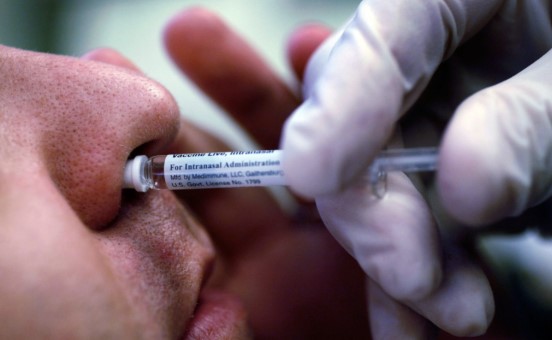Dr. Bryan Ardis BLOWS THE WHISTLE on COVID-19 and CLOT SHOTS attacking the body like snake venom and he speaks on detoxification and prevention of damage
01/17/2025 / By S.D. Wells

- Dr. Bryan Ardis, with his Global Healings Team, has identified natural remedies to protect against the effects of COVID-19 and “clot shot” spike protein injections.
- The team, drawing from indigenous medicine and global natural resources, has sourced plants and minerals that can detoxify and protect against foreign particles and prions.
- Some recommended remedies include organic lobelia, wormwood, licorice root, cinnamon, and Mucuna pruriens extract, which target nicotine receptors and prevent blood clotting.
- Dr. Ardis’s claims about the use of snake venom in pharmaceuticals and vaccines are supported by the industry’s ongoing reliance on venom-derived compounds, as exemplified by Venomtech’s collaboration with Charles River Laboratories.
Little do most people know there are plants and organic ingredients that can protect the body from the effects of Covid-19 and the coinciding “clot shot” spike protein injections that invade your organs and clog the vascular system. Dr. Bryan Ardis, the man who blew the whistle on snake venom peptides in pharmaceuticals and vaccines, gathered a team of nutritionists and scientists, the Global Healings Team, to find and source the proper natural remedies to protect and heal from the “venomous” attack of the China Flu and mRNA clot shots.
Dr. Ardis explains how Mother Nature the ingredients we need to protect ourselves from Big Pharma and the Scamdemic of the Century
Foreign proteins are invading human bodies like never before, thanks to the Wuhan virus plandemic and the coinciding clot shots that trick human cells into creating millions of spike prions that resemble virus pathogens. Dr. Bryan Ardis has assembled a team of researchers to help humans detoxify and protect themselves against these foreign particles and prions.
They’ve gathered plants, minerals, and elements from around the world that help the body detox, destroy, and release venoms and venom peptides from the cells in the body that have been invaded.
Indigenous medicine and the tribes and cultures around the globe that have used Mother Nature’s ingredients to protect themselves from snake bites and other venomous creature bites, like scorpions, spiders and poisonous frogs, came into play for this research for Dr. Ardis.
Some of the specialized remedies Dr. Ardis suggests for this cleanse include organic, wild-crafted lobelia (Indian tobacco), wormwood (anti-parasitic that functions just like Ivermectin), licorice root (prevents blood clotting), cinnamon, and Mucuna pruriens extract (that protects against organ damage from venom peptides). These help protect the cells at their nicotine receptors from the viruses that all target the cells there. That’s the key, he says.
are unaware of the widespread use of snake venom in pharmaceutical research. A recent announcement by a UK-based company called Venomtech has further underscored this reality.
Again, Venomtech has a massive library of venom peptides and fragments, which are used by pharmaceutical companies to develop new drugs and even vaccines. This news has been widely covered in the biotech industry, including by News-Medical.net, which highlighted Venomtech’s collaboration with Charles River Laboratories.
The collaboration between Venomtech and Charles River Laboratories aims to help drug developers explore venom-derived compounds for various nefarious drugs and jabs.
This revelation is particularly relevant in the context of Dr. Bryan Ardis’s claims about the origins of COVID-19, specifically the use of snake venom in the development of SARS-CoV-2 gain-of-function enhancements or vaccines. Critics who dismiss Dr. Ardis’s claims as conspiracy theories are, in fact, uninformed about the state of the art in biosciences.
The use of snake venom in pharmaceuticals is not a fringe idea but a common practice that represents cutting-edge drug discovery. Venomtech’s work is just one example of how snake venom is widely used in the industry.
In conclusion, anyone who dismisses the “snake venom” theory in relation to COVID-19 treatments or vaccines is simply uninformed about the resources used in today’s drug discovery pipelines. This practice has been ongoing for decades, and Venomtech’s announcement is a clear demonstration of the industry’s continued reliance on venom-based compounds. The use of snake venom in pharmaceuticals is not a conspiracy.
Watch Dr. Ardis explain how Mother Nature has all of the ingredients we need to protect ourselves from Big Pharma and the Scamdemic of the Century.
Bookmark Vaccines.news to your favorite independent websites for updates on venomous diseases and experimental gene therapy injections that lead to organ failure and Long-Vax-Syndrome.
Sources for this article include:
Submit a correction >>
Tagged Under:
Bryan Ardis, clot shots, Co-Venom-19, COVID, Dr. Ardis, foreign proteins, pharma snakes, prion detox, spike proteins, vaccine, Vaccine Detox, vaccine venom, venom, venom peptides
This article may contain statements that reflect the opinion of the author





















